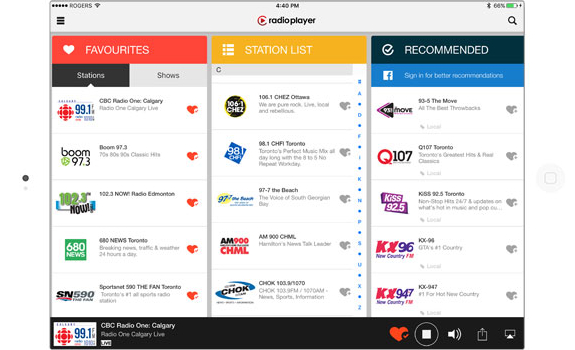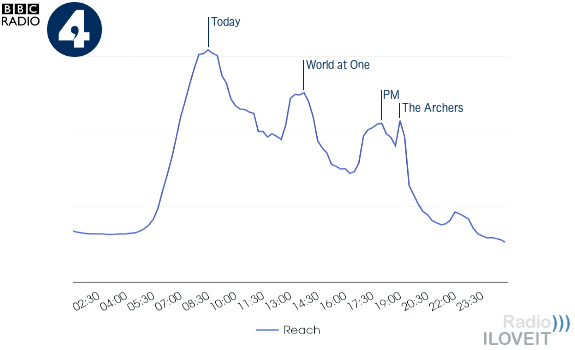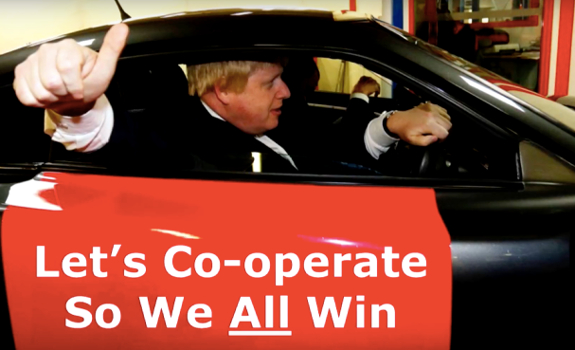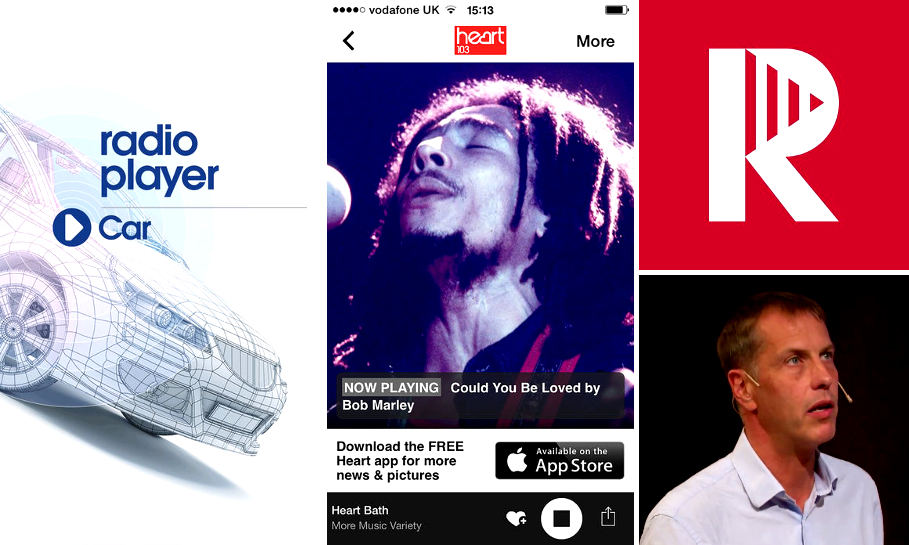How to promote radio as the preferred medium in connected cars and connected homes, and push radio’s self-owned platforms? Innovative ideas from the United Kingdom.
Being used in 8 countries already, Radioplayer — a joint venture between the BBC and commercial radio in the UK — may be on its way to become a popular platform for digital radio in Europe, and beyond (as also Canada has joined). At Next Radio 2017, founder/director Michael Hill shared 3 strategies to give listeners a better experience on connected devices, and push radio as people’s choice for media entertainment, no matter where they are, or how they listen.
“We think it’s gonna’ be huge”
Radioplayer Car takes hybrid radio to car dashboards using smartphone connectors (video: YouTube / Radioplayer)
1. Protect radio in cars
“Radio is crucial to drivers”, Hills says about a study in collaboration with Proteus Research, specialised in automotive research, for which 1500 people across the UK, France, and Germany were interviewed. Although that’s very positive for radio, consumers can choose from a variety of audio sources for in-car listening, going beyond their music collection. The increasing popularity of podcast consumption among US listeners is definitely an interesting trend. Therefore, the UK initiative is looking for ways to keep radio a popular medium in people’s cars.
Integrate apps in dashboards
“We make sure streaming apps integrate well with new dashboard systems, like Apple CarPlay and Android Auto, and shortly, in the next app release, SmartDeviceLink. We think it’s gonna’ be huge.” The BBC/commercial partnership also develops own applications, such as the Radioplayer Car (described as a ‘voice-controlled digital radio upgrade for your car stereo, integrated with your phone’ on the consumer-oriented website), and initiates partnerships with car manufacturers such as Audi. Their model A8 has a hybrid radio, powered by Radioplayer data.
Improve access to metadata
Collective data from all Radioplayer countries are coming together in a single feed, accessible through a restricted Worldwide Radioplayer API. “We only give that key to car companies that agree to do the right thing. This is where we get some strategic traction on car companies. As a radio industry, we can require them, in return for this valuable data, to do a few things.” Among the requirements for car manufacturers are:
- Car dashboards should have a physical radio button
- Car companies should not re-monetise radio content
- Car companies should respect radio station brands & logos
- In a hybrid situation, DAB & FM should be prioritised above streaming as a reception source
Another way of getting radio metadata into car audio devices is using RadioDNS (open source).
“Discovery is really important”

Radioplayer is offering personalised station & content recommendations (image: Radioplayer)
2. Be in connected homes
“We spend a lot of time shouting at small plastic cylinders, Michael Hill says about Radioplayer’s efforts to integrate radio streams with connected home devices, such as increasingly popular smart speakers. “We work very closely with Amazon, and have recently improved the Radioplayer Skill on Amazon, so that you can ask: what’s playing right now?” Radioplayer is now compatible with Sonos smart speakers [affiliate link] in all countries where the player is available.
Integrate with television devices
With a big screen present in every home, it makes sense for make radio streams accessible through TV sets as well. Radioplayer works with a Google Chromecast dongle [affiliate link], allowing you to open the Radioplayer app on your phone, select a station, select Chromecast from the Radioplayer app menu, and see your TV switch to a visual display showing a live feed, which includes album art of recently played songs, station info, social posts, and more.
3. Expand your radio platforms
Radioplayer is also investing a lot of time and resources to develop own apps and players. What started as a web player for laptops and PCs back in 2011, is now evolving into something much bigger thing. “Discovery is really important for us. We’ve built a fantastic recommendation engine, which bubbles up live stations and catch-up content for people.” But there’s another great benefit of all of this digital technology. It’s using listener insights for better programming:
Develop continuous (mini) shows

BBC Radio 4 is successful with popular shows & series (image: Radioplayer, Thomas Giger)
Learn from audience behaviour
Having your own apps and players allows you to get insights into how people listen to radio. Radioplayer has recently launched a new analytics engine in the form of a statistics dashboard. “It is meant to help programmers and producers see the patterns of listening across their radio stations.” Hill shows an analytics graph from 3FM on the Isle of Man that shows a huge digital radio listening spike as soon as a giveaway promotion is announced (on-air and) on Facebook.
Leverage your personality power
A graph from LBC indicates the incredible importance of developing & appreciating great talent. Looking at what happens during James O’Brien’s show, it’s evident that you want to have great personalities in your on-air schedule. However, after his 10am – 1pm show (with a peak at the start), LBC’s (online player based) ratings take a dive, only to increase slightly at 7pm when another well-known host comes on. A station needs more than one audience magnet.
Improve your programming schedule
Interesting listener graphs come from the BBC, illustrating that their characteristic scheduled produce characteristic results. The BBC Radio 4 schedule makes clear that it pays off to have multiple programming anchors as daily tune-in occasions, in this case: the morning, lunch & evening programmes Today, World at One, and PM. Apart from popular shows, you can develop continuous mini shows such as The Archers, ‘the world’s longest-running radio soap opera’.
“We are strategic; constructive; collaborative”

Michael Hill says Radioplayer’s attitude is the opposite of the Brexit mentality (image: Radioplayer)
Control your content monetisation
Looking at differences between Radioplayer and TuneIn, Michael Hill states that Radioplayer is optimised for each country. “We work very close with people in all of our territories to make sure that Radioplayer is flexible enough for that country.” Other differences are being committed to hybrid (smart radios switching between FM, DAB and IP), and being “non-profit” and “owned by broadcasters” so that Radioplayer may be able to preserve radio’s own interests better. “The commercial relationship should stay 100% between the listener and the broadcaster.”
Check out Radioplayer’s possibilities
Referring to Boris Johnson’s Brexit mantra ‘Let’s take back control’, Hill feels like “Radioplayer is the philosophical opposite of Brexit. We are strategic; we are constructive; we are collaborative”. He believes that, in any case for radio broadcasting, ‘Let’s co-operate so we all win’ is a better catchphrase. Countries or stations interested to license and implement this technology can find info on this page, or email: michael [dot] hill [at] radioplayer [dot] co [dot] uk.
Header images: Radioplayer, Next Radio






Add Your Comment